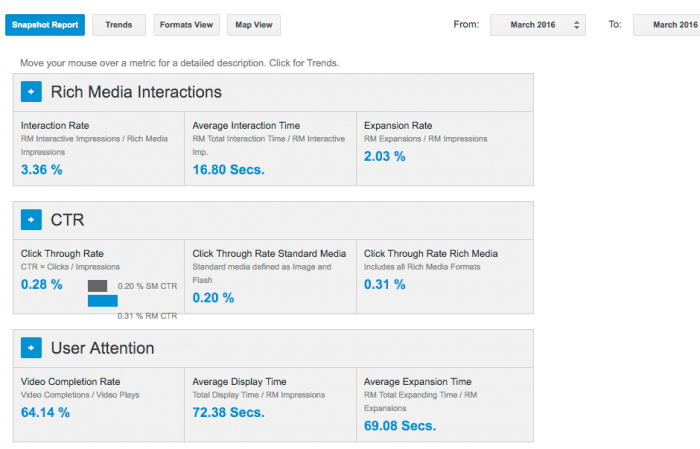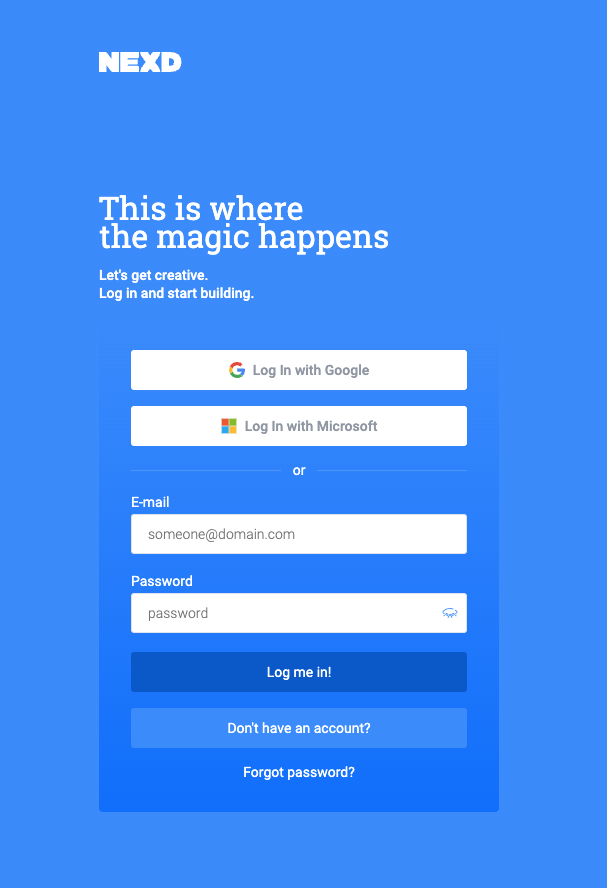What Are Mobile Rich Media Ads Anyway?
On both desktop and mobile, “rich media ads” are generally understood to be a step up from static banner ads. They can include video, audio and other types of content that are designed to drive audiences towards interacting with the ad.
- You can use video, audio, images and more
- Also sometimes referred to as a “multimedia” banner
- Often, but not always, made using HTML5
- Can appear in-feed or fullscreen
The key to the success of mobile-rich media ads is their higher levels of engagement. They’re simply better to interact with. And they can be, you know, fun (you can, of course, make super-serious mobile rich media ads if that’s what your campaign calls for).
Mobile Rich Media Ads, Like A Knight In Shining Armor
First, in case you’re not familiar with the history of display advertising, here’s a little bit of background.
The first banner ad ever to grace the web enjoyed a CTR of 44%. Different times, eh? As with many new and novel things, people were interested in it. And as a result, they clicked.
Spin forward 20-odd years, and the digital marketing landscape has shifted a lot. People view banner ads with contempt and suspicion – 54% of users don’t click on banner ads because they’re suspicious of them.
And then you have the 198 million users worldwide who will virtually never see a banner ad at all, thanks to ad blocking.
Why are mobile rich media ads getting better CTRs?
Nowadays, advertisers can expect to see a CTR nearer 0.11% for standard desktop banners. These banners are essentially the same as the ads we first saw 20-plus years ago.
So, if you’re into digital marketing, looking at desktop CTR figures alone can make for some pretty depressing reading.
Mobile, though, fares better, with standard mobile banner ads achieving 0.26%. Now, brands, agencies and ad tech companies trying to address the dwindling number of users willing to click on their ads. On the other side of the same issue, you have publishers who are facing falling ad revenues, thanks in large part to ad blocking.

Then, riding onto the field, you have mobile rich media ads. In the early forms, mobile rich media ads delivered better CTRs than their static counterparts. Again, this can, in large part, be put down to the “new” factor.
Users have become fed up with standard banners; then suddenly, they’re presented, maybe, a video or perhaps an ad they’re able to interact with. This positive first response encouraged marketers, driving rapid growth in mobile rich media ad usage – much of it centred around video.

Get started
Sign up to Nexd Campaign Manager for a free 14-day trial and start creating environment-friendly and highly engaging programmatic creatives!
Why Are Mobile Rich Media Ads Better?
So, why do people engage with mobile rich media ads more than standard mobile ads? Well, a lot of it is down to the novelty factor. But there’s a lot more to it than that.
Stand Out From The Crowd
Mobile rich media ads give brands more time and creative real estate to let their ideas shine. With full-screen ad units, they have the entire screen area to play with.
In-feed placements also benefit from mobile rich media ads – thanks to video and interactive ad units like image galleries, panoramas and more. This creative freedom means brands, more than ever, are free to express their unique benefits. It’s no longer just about slapping some solid copy on top of a pretty picture. We’ve come a long way since then.
Attention-grabbing
More and more these days, when you’re trying to engage your audience, time is of the essence. You need to present them with something that grabs them by the eyeballs and says, “look at me!”.
Video and moving images go a long way towards achieving that. They draw the eye in. But mobile rich media ads are able to go further than that. By presenting audiences with novel ways to engage with an ad, they’re more likely to engage with it for longer.
More Interactions
With a standard banner, advertisers are essentially limited to a single interaction – tapping on the ad and redirecting their audience to a landing page. This landing page needs to be optimized and perform well on mobile screens.
But with mobile rich media ads, the ad unit itself can contain a wealth of different interaction types. In the case of some campaigns, you can even get them to convert within the ad itself – removing the need for a landing page entirely.
More Data
Standard banners only give you two metrics: click-through rates and impressions. As a result, CTR has pretty much become the default metric that marketers are interested in. With good reason, of course. But what if you want to know a bit more?
Mobile rich media ads allow for engagement rates and also rates of interaction for every individual element within the ad. This helps to take the guesswork out of optimization. Knowing precisely which elements or behaviours are delivering better results makes focusing on what’s working easier.
Cost and Return
Most HTML5 ads are time-consuming to produce, sometimes with production times measured in days or weeks. This long production time frequently leads to inflated costs. But all is not lost.
It’s now possible to use existing media assets in mobile rich media ads without the need for HTML5, flash, builders or anything like that. Easy-to-use, template-based platforms open up the playing field, allowing not just agencies but SMEs and more to tap into rich media on mobile.
What are your experiences with mobile rich media ads?